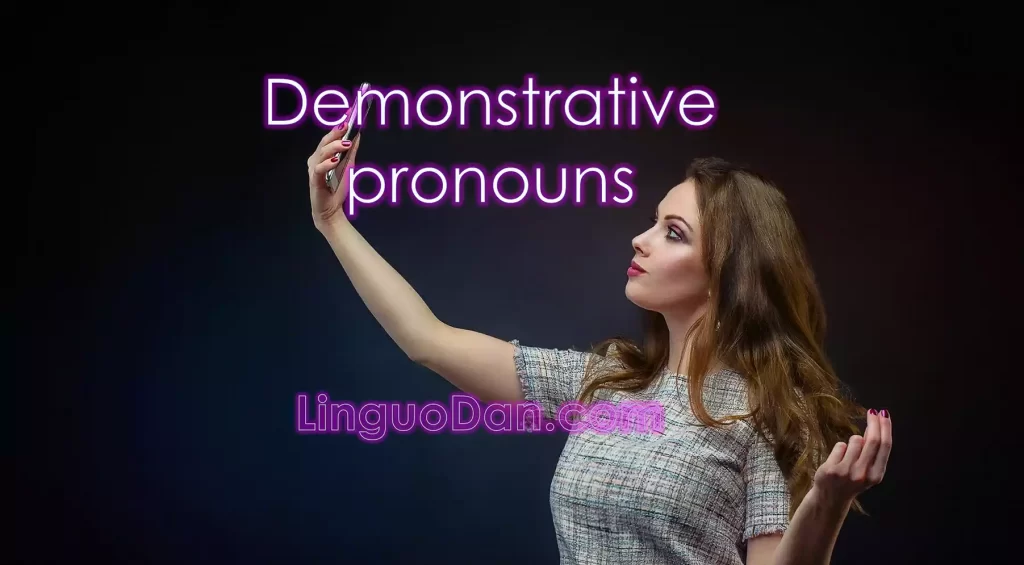Demonstrative pronouns in English

Demonstrative pronouns
Demonstrative pronouns – in English indicate objects, signs of objects and their number (this (these), that (those), such, (the) same). In a sentence, they can independently act as a subject (who? what?) or an object (whom? what? what?), as well as as a signifier (which?) before the nouns they denote.
- Look at that snowman!
- It has a hat, a brush and two buttons
- Look at this snowman!
- It has a hat, a brush, a scarf and three buttons
Demonstrative pronouns indicate a person or an object: this, that, these, those.
- Look at this!
- That doll is mine
The demonstrative pronoun this (these in the plural) is used when talking about objects or beings that are close to the speaker, as well as about actions that will happen in the near future or are happening now.
The demonstrative pronoun that (those in the plural) refers to objects or beings that are distant from the speaker in space or time, chronologically belonging to the past or future.
| This is a desk | That is a desk |
| This play will be funny | That play was funny |
| These pens are mine | Those pens are yours |
Use of demonstrative pronouns
The demonstrative pronouns are this, that, such, (the) same. The demonstrative pronouns this and that have two numbers: this — these; that — those. This is used to point at what is nearer in time or space; that points at what is farther away in time or space.
- He looked him over critically. “Yes, this boy might do,” he thought
- “I like that fellow,” Henry Waterman confided to his brother the moment Frank had gone with instructions to report the following morning
This and that may be applied both to persons and things.
- And this girl was French, not likely to lose her head, or accept any unlegalized position
- Other people were anxious to get this soap at this price
- What do you think of that Belgian fellow, Profond?
- To Forsyte imagination that house was now a sort of Chinese pill-box…
The pronoun such.
- She wore a red ribbon in her hair, and was the only one of the white company who could boast of such a pronounced adornment
The pronoun same is always used with the definite article.
- The driver was a young man… wearing a dandy cap, drab jacket, breeches of the same hue
The demonstrative pronouns this and that are used as subjects, predicatives, objects, and attributes.
- It’s all right, but I’d rather try my hand at brokerage, I think that appeals to me
- The only honest people — if they existed — were those who said: “This is foul brutality…”
- Tell me just how you did this
- “If that young fellow wanted a place, I’d give it to him,” he thought
The demonstrative pronoun that (those) may be used as a wordsubstitute:
- But in thinking of his remaining guest, an expression like that of a cat who is just going to purr stole over his (Swithin’s) old face
- The features (of young Jolyon) were certainly those of a Forsyte, but the expression was more the introspective look of a student or philosopher
The pronoun such is used as subject, predicative, object, and attribute:
- If any living man can manage this horse I can — I won’t say any living man can do it — but if such has the power, I am here
- Her idolatry of this man was such that she herself almost feared it to be ill-omened
- But such thoughts and visions did not prevent him from following Professor Caldwell closely
The pronoun (the) same usually performs the function of an attribute, but it may be used as subject, predicative, object:
- We were in the same classes
- It is to be feared the same could not be said of you, were you to be called hence
- Martin’s Sunday was the same as before
- “May this young man do the same!” said Angel fervently